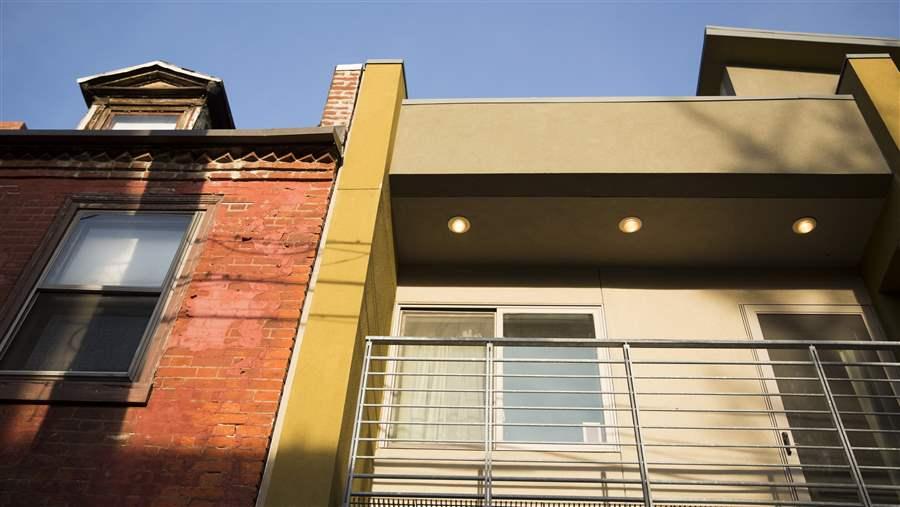Pew Report Examines Gentrification and Neighborhood Change in Philadelphia
Study finds that the phenomenon, though limited, can have significant impact
 © The Pew Charitable Trusts
© The Pew Charitable TrustsPHILADELPHIA—A new analysis by The Pew Charitable Trusts exploring gentrification and other types of neighborhood change in Philadelphia finds that only 15 of the city’s 372 residential census tracts gentrified between 2000 and 2014, the last year for which data were available. The report shows that over 10 times as many tracts—164—experienced statistically significant drops in median income during the period studied, as the estimated number of Philadelphians living in poverty grew by more than 60,000.
The study, Philadelphia’s Changing Neighborhoods: Gentrification and Other Shifts Since 2000, uses a definition of gentrification that identifies areas that shifted from a predominantly low-income population to a significantly higher-income one. The report categorizes neighborhoods that have gentrified into four groups, based on what they were like in 2000: Predominantly working-class African-American neighborhoods (three tracts in the Graduate Hospital neighborhood); old industrial areas (two tracts in Northern Liberties); mixed-income, mostly white neighborhoods (six tracts, mostly in South Philadelphia); and nonaffluent sections of Center City and adjacent areas. The study found that the pace and scope of change were different in each of the categories.
“Our goal with this analysis was to determine the incidence of gentrification in Philadelphia and place it in the context of other forms of neighborhood transformation,” said Larry Eichel, director of Pew’s Philadelphia research initiative. “The data indicate that, by our definition, gentrification is a relatively small part of the story for the city’s changing neighborhoods. But what happens in the areas that have gentrified, or are in the process of doing so, can have significant impact on communities,” Eichel added.
Other important findings include:
- Neighborhoods found to have gentrified were not among Philadelphia’s lowest-income areas in 2000. None of the 15 gentrified tracts was in the bottom quarter of the city’s census tracts that year when ranked by income.
- Twelve of the 15 gentrified neighborhoods had higher percentages of white residents in 2000 than the city as a whole, and all 15 had larger proportions of whites in 2014. There were modest increases in the share of Hispanic and Asian residents as well.
- The three predominantly working-class African-American tracts that gentrified, all of which are located in the neighborhood known as Graduate Hospital, experienced the most dramatic changes in racial composition. Their total black population fell from 7,793 in 2000 to 3,450 in 2014. During the same period, the number of white residents more than tripled in the neighborhood.
- Home prices rose the most in gentrified areas where there had been relatively high numbers of investor-owned and vacant properties in 2000 and where many of the neighborhoods’ housing units have been built in the years since: the old industrial and working-class African-American tracts.
The comprehensive report also identifies several parts of Philadelphia, including those near university campuses, that have undergone the type of shifts often associated with gentrification—such as rising real estate prices, shifts in racial composition, and increases in educational attainment—but did not experience the hikes in income necessary to have gentrified, based on the report’s definition. Public policies addressing neighborhood changes in Philadelphia are also examined, including those designed to shield long-term homeowners against gentrification-related spikes in property assessments.
For more information on the research and additional exploration of neighborhood change in Philadelphia, including additional analyses and perspectives of city residents featured in the report, visit www.pewtrusts.org/PhillyGentrification.
###
The Pew Charitable Trusts is driven by the power of knowledge to solve today’s most challenging problems. Pew’s Philadelphia research initiative provides timely, impartial research and analysis on key issues facing Philadelphia for the benefit of the city’s citizens and leaders. Learn more at www.pewtrusts.org/philaresearch.











